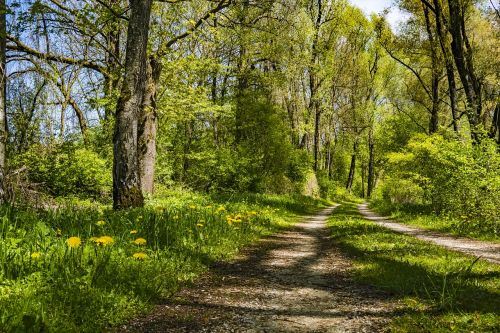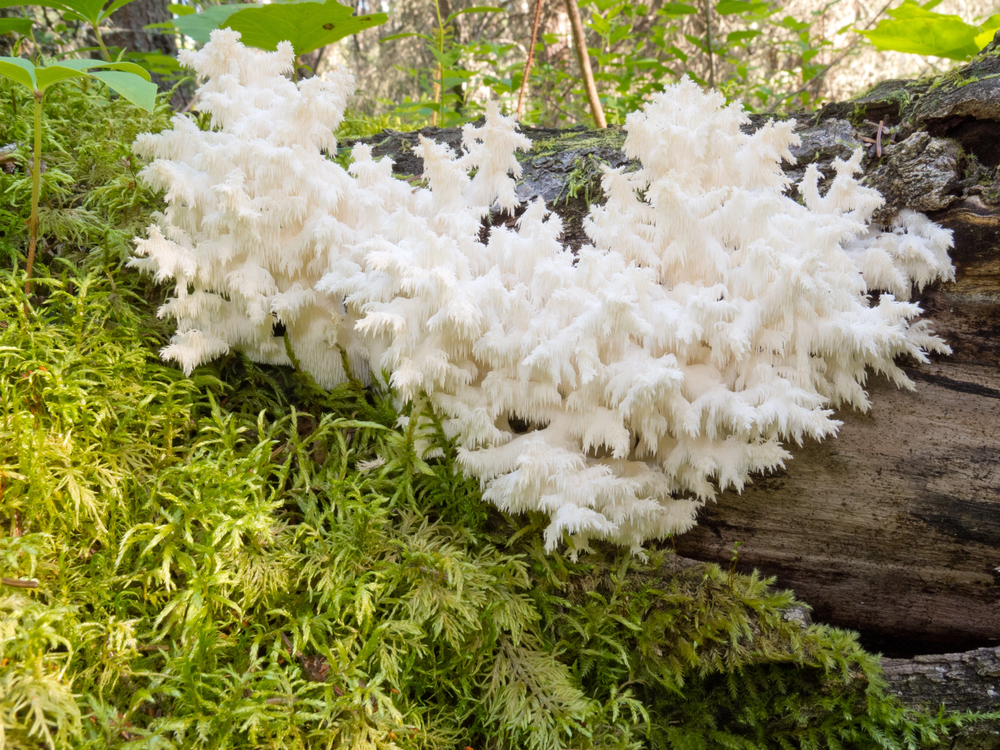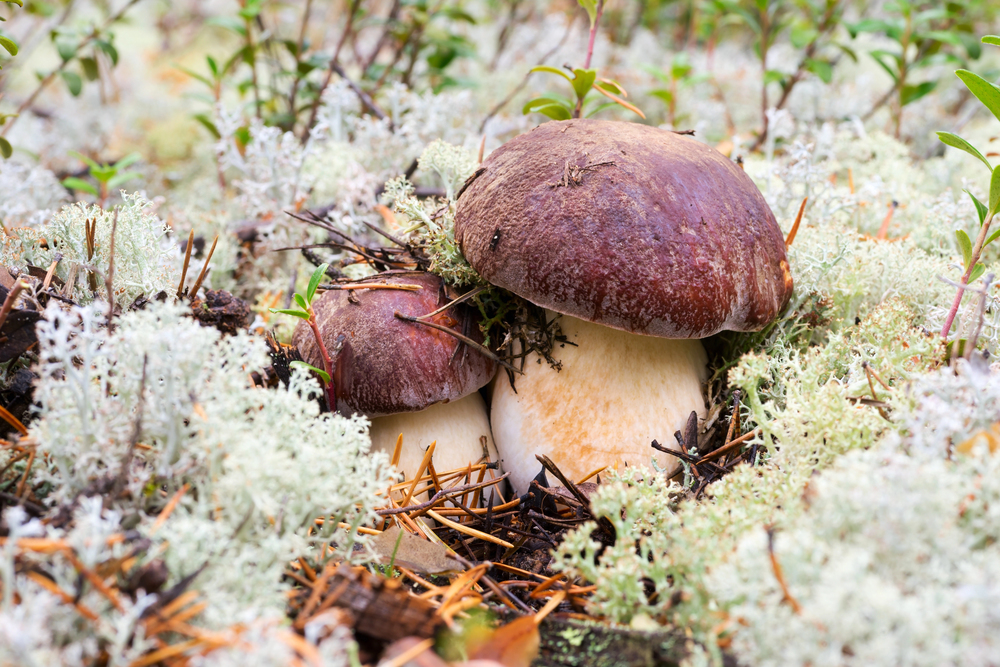Giant puffballs are notable for their distinctive morphology and unique characteristics that assist in identification in diverse habitats. Their spherical or pear-shaped form, combined with a smooth, leathery skin that transitions from white to tan, are pivotal features for foragers and enthusiasts alike. Significantly, the absence of a stem or cap sets them apart from potentially harmful lookalikes. Understanding these traits not only aids in safe identification but additionally opens up discussions about their ecological roles and culinary potential. Yet, one must consider the broader implications of mistaking them for other fungi.
Key Takeaways
- Giant puffballs are typically round or pear-shaped, ranging in size from 20 to 50 cm, with some specimens reaching up to 80 cm in diameter.
- The exterior of young puffballs is smooth and white, maturing to a tan or brown color with shallow craters.
- When sliced vertically, mature puffballs reveal a firm, white interior that resembles marshmallows, without any stem or cap.
- Found in meadows, forest openings, and grasslands, they thrive in nutrient-rich environments, often reappearing in the same locations yearly.
- Puffballs contain round, olive-brown spores, capable of producing approximately 7 trillion spores during their growth.
Physical Characteristics
Identifying giant puffballs involves observing their remarkable physical characteristics, which include unique shapes, sizes, colors, and textures. These fungi typically present a round or pear-shaped form, with a size range from 20 to 50 centimeters wide and high. In some instances, specimens can grow up to 80 centimeters in diameter and weigh several kilograms. The largest recorded giant puffball measured an astonishing 8.6 feet wide and weighed 48 pounds. Young giant puffballs are characterized by their white, smooth exterior. As they mature, they develop a tan to brown color with shallow craters or irregular cracks. The inner flesh is initially white, transitioning to yellow or olive-brown as maturity progresses. The outer skin can vary, being firm and elastic or thick and leathery, depending on the species. The fruiting bodies thrive in various habitats, including meadows and forest openings, often growing directly on the ground or on decaying wood. Interestingly, these fungi can additionally form fairy rings in grasslands, showcasing their distinctive growth patterns. Common and widespread in the United Kingdom, understanding these fundamental physical characteristics serves as a foundation for successful identification of giant puffballs.

Key Identification Features
Key identification features of giant puffballs are crucial for guaranteeing accurate recognition and safe foraging. The process for confident identification includes key aspects such as vertical slicing, interior texture, and the absence of a stem or cap. First, cut the puffball in half; it should reveal a firm, white interior often likened to marshmallows. No signs of a developing stem or cap should be present to avoid confusion with potentially toxic species. Additionally, these fungi typically appear in late summer to early autumn, which can aid foragers in determining the optimal time for collection.
| Feature | Description |
|---|---|
| Exterior Texture | Smooth, leathery, white, and peelable |
| Size and Shape | Large and round, sometimes irregularly flattened |
| Spore Characteristics | Round and olive-brown, with an abundant spore load |
It’s vital to monitor the growth stage as cracks and discoloration indicate maturation. This knowledge helps guarantee safe consumption practices. Avoid small specimens, which may be confused with toxic Amanita species. Always collect from clean areas to prevent contamination, and cook before consumption to increase digestibility. Absolute identification before any foraging activity guarantees a safer experience in the wild.
Distribution and Habitat
Giant puffballs are distributed across a wide range of geographic areas, demonstrating a notable global presence. They can be found in Britain, Ireland, mainland Europe, parts of North America, and several countries in the southern hemisphere. Nevertheless, their occurrence varies regionally; for instance, they are common in some European nations yet rare in others.
In Britain and Ireland, these fungi tend to be localized and infrequent. Curiously, they often recur year after year in the same spots, contributing to their distinctive local presence. Widespread populations are observed throughout mainland Europe, making it an important area for enthusiasts and researchers alike. During their growth, giant puffballs can produce 7 trillion spores, showcasing their remarkable spore dispersal capacity.
Giant puffballs prefer certain habitats, such as pastures, hedgerows, verges, and the edges of woodlands. They thrive in nutrient-rich environments, often associated with grassy areas, roadside verges, fields, and locations among briars and nettles. Moreover, they can occasionally be found in open woodlands and woodland clearings. Some specific sites where they flourish include cemeteries, exposed hillsides, and drainage ditches. Understanding their distribution and habitat preferences is crucial for proper identification and exploration.
Safety and Lookalikes
When foraging for puffballs, understanding safety considerations and potential lookalikes is vital to prevent misidentification and potential health risks. Giant Puffballs are large, spherical, and pure white inside and out when edible. Conversely, lookalikes, such as earthballs, possess a tough, warted skin and contain a dark, granular interior. Amanita mushrooms may appear similar but have caps and stems forming inside, indicating their toxicity.
It is important to avoid puffballs that show any discoloration, as those that turn yellow or green inside are inedible. Furthermore, cracked outer skin and visible spores indicate a puffball’s inedibility. Protective measures, such as avoiding inhalation of spores, are necessary; exposure can lead to lung inflammation. Proper handling includes using paper bags and washing the exterior thoroughly. Giant Puffballs are considered one of the “Foolproof Four” for beginner foragers, making them a great first mushroom to learn about.
Common mistakes to avoid include neglecting the exterior and interior checks, along with misidentifying smaller puffballs for harmless varieties. Finally, consuming puffballs that have surpassed their prime can cause gastrointestinal upset. Staying informed and cautious can significantly reduce the risks associated with foraging for Giant Puffballs.
Culinary Uses and Flavor
Puffballs offer a unique culinary experience characterized by their delicate flavor and versatility in cooking. Their soft and velvety texture pairs well with various ingredients, allowing them to absorb the flavors of accompanying dishes. Unlike traditional mushrooms, puffballs do not carry an earthy or woody taste, making them suitable for many recipes. Cooking method impacts taste; fat and acid enhance the flavor of puffballs.
The following table summarizes popular culinary preparations for puffballs and their flavor characteristics:
| Preparation Method | Description |
|---|---|
| Grilled Puffball | Sliced, brushed with olive oil and garlic, grilled until golden. |
| Puffball Omelette | Diced puffball sautéed with shallots, combined with beaten eggs. |
| Breaded and Fried Puffball | Dipped in milk and egg, coated in flour, and fried until golden. |
Culinary uses include incorporation into pasta dishes, stir-fries, or raw salad applications. When preparing puffballs, kitchen techniques such as peeling the outer layer and avoiding overcooking are crucial to preserving flavor and texture. For improved taste, consider adding a spritz of lemon or vinegar. Whether grilled or used raw, puffballs stand as a versatile choice for creative cooking.



